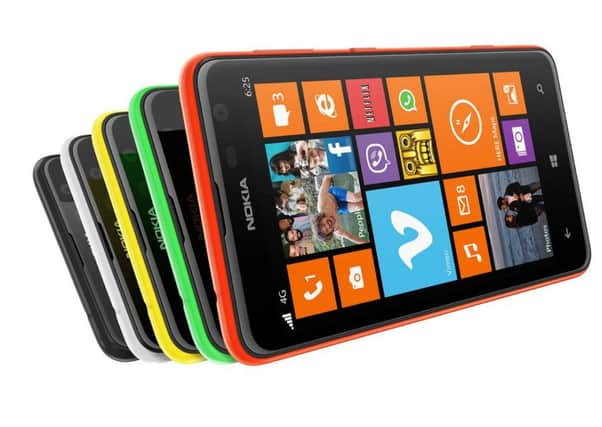Best new handsets to replace your discontinued Windows Phone


Its latest has been its ill-judged entry into the mobile phone market, taking on the even bigger beasts of Apple and Google. Its one-size-fits-all Windows 10 operating system was supposed to work in the same way on pocket handsets as on full-sized PCs – but for many, that prospect was more a threat than a promise.
As a result, Microsoft’s Lumia range of phones, which had been made originally by Nokia, gathered dust on the shelves, and last month came the announcement that from December they will no longer be supported. In other words, your Windows Mobile handset will no longer be secure to use.
Advertisement
Hide AdAdvertisement
Hide AdThe company didn’t have to take on Google – in fact in doing so, it was cutting off its nose to spite its face. That’s because Microsoft owns a range of patents on some of the computer code it says other phones use, and as a result, earns a royalty payment from every Android phone sold, no matter who makes it.
Samsung, for instance, is reported to have handed over more than $1bn to Microsoft in 2013. This works out at something like £3 a phone – a sum that is passed on to buyers as a premium on the purchase price.
But this arrangement does nothing for the profile of Windows. It is mobile phones, not computers, that are the lingua franca for today’s generation of millennial tech users, and Microsoft is a name not in their lexicon, except as a byword for crashes and lockups on their laptops.
With its range of mobile phones now officially dead, the few who bought them will be looking for a replacement this year, and the good news is that almost any of the current handsets will be an improvement.
Advertisement
Hide AdAdvertisement
Hide AdYour first consideration will be whether to buy an iPhone or an Android, and unless you want to spend a great deal more money this time around, your answer will be the latter.
Which phone will suit you best depends principally on how much you want to spend. Towards the bottom end of the market, you can expect to pay £120 for a contract-free Honor 7A, from the Chinese multinational, Huawei. This is about as good as you can get for the price, with decent though not exceptional performance and an extremely well defined 5.7in screen. There is only 16GB of inbuilt storage, but you can expand it by popping in an SD card.
Around £30 more will get you the ageing but still excellent Sony Xperia XA1, which has a smaller screen but a much better camera.
For £240, you can have the superb Honor Play, which delivers iPhone quality on a large 6.3in screen and accommodates a cavernous 64GB of storage.
Advertisement
Hide AdAdvertisement
Hide AdUnless you choose to go second-hand, you will pay a great deal more for any of the current Apple handsets. The iPhone 7, with a screen of only 4.7in but with 32GB of storage, has been on the market for more than two years but still costs £450, and it’s hard to point to a benefit for the premium. Apple’s legendary ease of use is often mentioned, and while that is true, Google has pretty much matched it with the most recent versions of Android.
I think it’s fair to say that if you could navigate a Windows phone, any other one will be a walk in the park – not to mention a breath of fresh air.